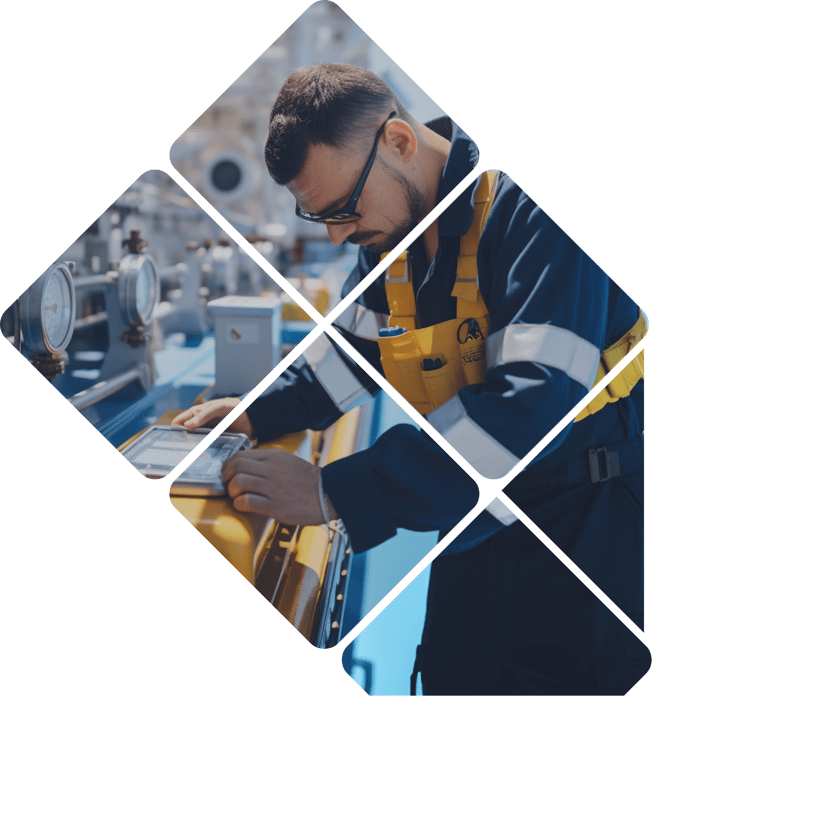IMO reinforces enclosed space entry standards
The most important shift is clear: atmospheric testing must go beyond oxygen.

Maintaining a gas detection system at sea can be a highly complex discipline. What can we do about it?
We have previously discussed gas hazards at sea, and how they can threaten the safety of crew and cargo. Eliminating the threat completely might seem unrealistic; proximity to gases is part and parcel of life at sea. A more sensible response is to employ various safeguards, the most important of which is a gas detection system coupled with good routines.
And sure enough – all vessels have this to some extent, as required by laws and regulations. However, gas detection systems can be complex, disordered and expensive to maintain.
Below is a walk-through of the most common challenges.
Most of the cost drivers are born out of the mother category “standardisation” (or lack thereof).
Shipping is a game of variety regarding cargo, vessel classifications, and territories. This certainly holds for gas detection as well. An individual vessel's traditional gas detection setup consists of 10–12 different instruments from 8–10 suppliers.
The different instruments are needed due to the many different gas hazards on board, whilst the amount of suppliers is a result of lacking overview and planning.
Prior to launch, every ship is equipped with (a minimum of) gas detection equipment. As these units expire or deteriorate, the ship owner is required to maintain or replace them. As a measure to avoid vetting remarks (vettings happen at varying frequencies, and may be scheduled beforehand or unannounced), ship owners often procure additional gas detection equipment – to make certain that they will be in compliance.
The problem is that any gas detection equipment on board has to be maintained, so any additional units result in additional maintenance. Suddenly, a vessel is “locked in” with 20 units, where perhaps eight would suffice. This represents a cost. We have outlined a real-world cost scenario in the table below:
| Real-world case study | |||
Gas detection on a fleet of 14 vessels |
|||
| Pre Standardisation | Post Standardisation | Reduction | |
| Instruments | 176 | 84 | – 92 |
| Types of instruments | 26 | 3 | – 23 |
| Manufacturers | 9 | 2 | – 8 |
| Suppliers | 9 | 1 | – 8 |
| Maintenance cost per year | USD 105 600 | USD 50 400 | – USD 55 200 |

Now, consider how ship owners sometimes oversee tens or even hundreds of ships. This raises the administrative complexity considerably. Although many vessels will have similar classifications, the technical configuration of each vessel will normally be unique.
This leads us to the next challenge.
The scattered approach described above requires extensive effort from the fleet administrators. Staying on top of requirements, keeping overview and up-to-date systems, require competence in gas regulations and solutions. Here are some of the regulations to which they need to conform:
| Regulations | |||||||
| IMO | ISGOTT | SOLAS | OCIMF | ISM | ISPS | Class Societies | Oil Majors |
 Ships will often have to comply with several different regulations, either in parallel or in accordance with the cargo they carry at any given time (some ships carry one type of goods from A to B, and a different one from B to A).
Ships will often have to comply with several different regulations, either in parallel or in accordance with the cargo they carry at any given time (some ships carry one type of goods from A to B, and a different one from B to A).
This can be a complicated landscape to navigate, even for seasoned professionals.
Cost-efficient gas detection capabilities require supply chain precision, something that can be hard to achieve in complex organisations.
Lack of standardisation can lead to:
The shipping industry faces pressure to make operations more sustainable, perhaps in particular when it comes to safeguarding personnel, resources and life at sea. Good planning is a crucial factor for maintaining a safe work environment, avoiding over-procurement, reducing waste of resources and operating sustainably.
How would you like it if someone gave you a different phone several times a week?
Changes can be a good thing in life, but when it comes to life-saving drills and equipment – you want to double-down on what you already know and master. Gas detection equipment should align with your know-how, not come towards you like a curveball.
Crew members often sail with different ships in a fleet. Everytime they go from one environment to another, they will have to adapt to different circumstances. Ship owners should help make that transition as smooth as possible.
If your fleet relies on gas detection instruments from many different suppliers, you achieve two things: 1) Reduced crew safety and 2) an increased need for training/adaptation.
Both carry a cost.
As mentioned above, ship owners are required to keep their gas detection equipment maintained. For each gas detection unit, there are two steps involved:

Maintenance traditionally involves shipping the equipment to shore, where a service provider performs the service.
The challenge for a ship is to keep 13 different instruments, with 13 different expiration dates, calibrated – and keeping the ship on track with its primary task: Transporting its cargo.
If a ship crew discovers that their vessel is due for vetting, and it realises that some of the gas detection equipment has expired, they are forced to either dock or arrange some other transaction – post-haste. Shipping of dangerous goods (calibration gases) to a remote location is costly and logistically challenging.
Faced with the alternative of keeping a USD 25 000 – 100 000 per day oil tanker at bay, it is not uncommon for shipowners to resort to expensive means of transportation, like using helicopters. Obviously, this is neither a cost-effective nor environment-friendly solution.
A more cost-efficient strategy would be to aim for:
This would allow for easier planning and a more coherent maintenance program. Planning is key.

Post by Martin Bruusgaard
Similar subjects
Never miss out on industry news, reviews and articles.
The most important shift is clear: atmospheric testing must go beyond oxygen.
Extending equipment lifetime works well, provided the support system still does.
For years, logistics was about coordination. Timing. Planning. A system that, while...
Optimal safety. Minimal effort.

Providing solutions for




